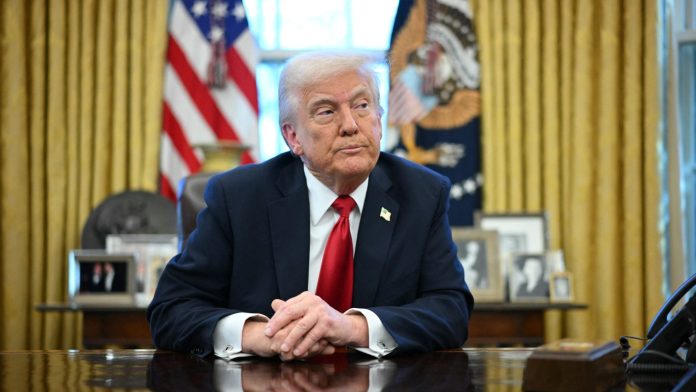Use tariffs to shrink the trade deficit? Watch out for unintended consequences.
By Sabri Ben-Achour, Marketplace
President Donald Trump believes that tariffs will shrink the trade deficit by getting more Americans to buy U.S. stuff instead of foreign stuff. But in economics, things don’t work quite that simply.
There was this “Simpsons” episode where Homer traveled back in time to the age of the dinosaurs: “As long as I stand perfectly still and don’t touch anything, I won’t destroy the future,” Homer said.
Here’s an explanation of the points made in the article above (and more):
Tariffs, Trade Deficits, and the Economy
President Trump believes that tariffs — taxes on imported goods — will reduce the trade deficit by making foreign goods more expensive, encouraging Americans to buy more U.S.-made products.
But in economics, things are more connected than they appear — and trying to fix one thing can cause ripple effects elsewhere.
What Is the Trade Deficit?
The trade deficit means the U.S. imports more than it exports — we buy more from other countries than they buy from us. That sends dollars out of the country to pay for those foreign goods.
But those dollars don’t just disappear.
Where Do the Dollars Go?
Foreign countries, companies, and investors use those dollars to buy American financial assets, including:
- U.S. Treasury bonds (loans to the federal government)
- Corporate bonds (loans to companies)
- Stocks and other investments
So in a way, the trade deficit finances our ability to borrow. The dollars we send out come back as foreign investment in the U.S.
What Happens If We Shrink the Trade Deficit?
If tariffs reduce imports, fewer dollars leave the U.S. That also means:
- Fewer dollars return as foreign investment
- There’s less capital available to lend in U.S. markets
- The supply of money available for borrowing shrinks
This has important consequences:
- When the supply of money falls but demand stays the same, interest rates rise — borrowing becomes more expensive.
- That doesn’t force borrowing to go down, but it makes it harder and less attractive to borrow.
- If the federal government keeps borrowing heavily (due to large budget deficits), it can crowd out private borrowers like businesses and consumers.
Eventually, someone in the economy will borrow less — because of higher costs. Most likely, it will be businesses or consumers, not the government.
Tariffs Also Raise Prices (Inflation)
On top of this, tariffs make imports more expensive — and U.S. companies often raise their prices in response. That adds to inflation.
Higher inflation puts the Federal Reserve in a tough spot. It may be forced to raise interest rates (or keep them high) to control inflation, adding even more pressure on borrowing — raising costs and slowing demand.
The Big Picture
- Reducing the trade deficit through tariffs doesn’t just change what we buy — it also affects how much capital flows into the U.S., interest rates, and borrowing.
- With less foreign money coming in, and inflation rising, interest rates likely go up.
- That makes it more expensive to borrow, especially for businesses and consumers.
- If borrowing and spending fall too much, it can slow the economy — and even tip it into a recession.
Bottom Line
Tariffs may reduce the trade deficit on paper, but they come with real economic trade-offs:
- Higher prices (inflation)
- Higher interest rates
- Reduced investment and borrowing
- Slower growth or potential recession
Economics is full of unintended consequences. Tariffs might shrink the trade deficit, but they can also shrink the economy along with it.



